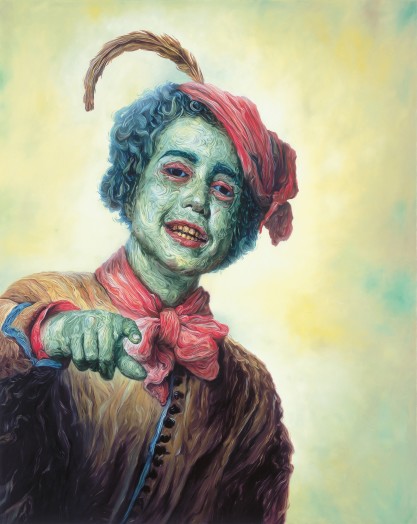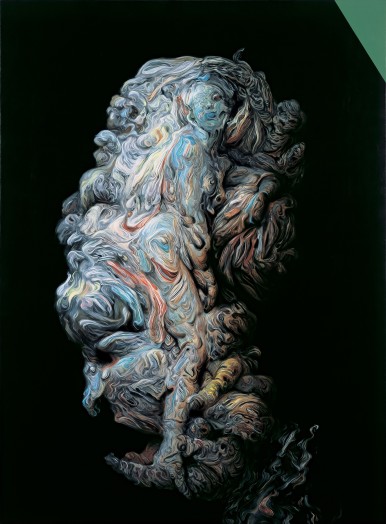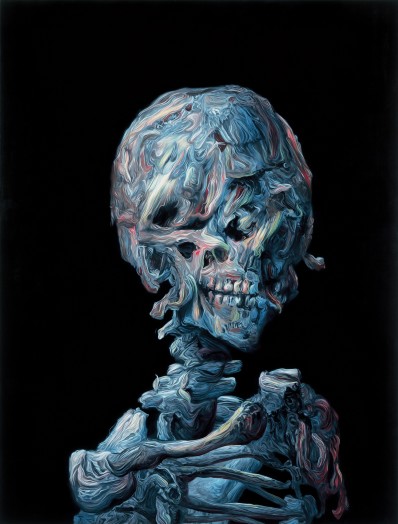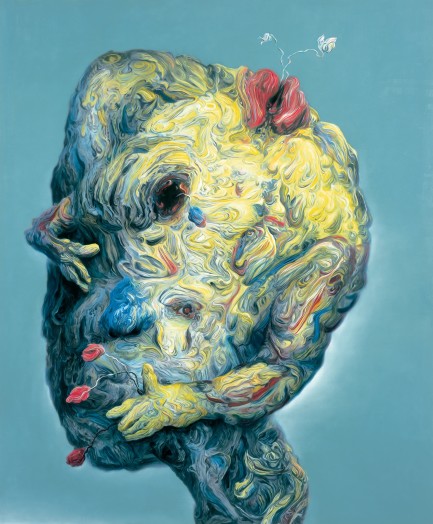Glenn Brown: Galerie Max Hetzler, Berlin
Past exhibition
Solo Exhibitions
Galerie Max Hetzler is pleased to present an exhibition of new paintings by Glenn Brown. In a highly individualistic approach Glenn Brown reflects upon the history of art, his paintings being often based on reproductions. Never confining himself to a specific period, he works after paintings of different artists such as Rembrandt, Murillo, Fragonard, Dalí and Auerbach among others.
In his third solo exhibition at Galerie Max Hetzler, Brown shows his latest six paintings which subjects are mainly portraits. Figures are shown on a nearly one-coloured background, with the exception of Misogyny, a female torso placed in front of a nocturnal mountain landscape. The Great Masturbator or Declining Nude, retrace portraits made by Murillo and Pissaro. The laughing boy, seemingly cheerful in Murillo's version, becomes somehow ghostly with his peculiar greenish complexion. At a closer look the eyes, black pupils in blue eyeballs, turn out to be dead and his yellow rotten teeth intensify this impression.
Glenn Brown is particularly interested in the genre of portrait. He chooses suitable subjects, which beauty or ugliness can be a source of inspiration. Many of Brown's paintings are based on the combination of two reproductions. One forming the foundation of the painting, another one influencing the colour scheme. He never copies his sources but transforms them by applying a complex series of modifications, sometimes stretching or extending the figures. Manipulations that make the original painting unidentifiable. Glenn Brown uses the traditional technique of oil on wood panel. With very small fine brushes he achieves a quite smooth application of paint, filling the ground with swirls of varying colours. They feign an opaque impression of paint that could suggest a photograph or a computer-manipulated image. There is no direct connection between the titles and the paintings. They often come from pop culture and may seem puzzling. Thus they are all the more challenging.
Glenn Brown, born in 1966 in Hexam, Northumberland (UK), lives and works in London. Since the 90's he has participated internationally in solo and group shows. In 200O he was nominated for the Turner Prize, and in 2004 he had a survey exhibition at the Serpentine Gallery in London. His work is represented in major collections including the Art Institute of Chicago, the MoMA and the Walker Art Center in Minneapolis.
On the occasion of the show a catalogue with an essay by Tom Morton is being published.






